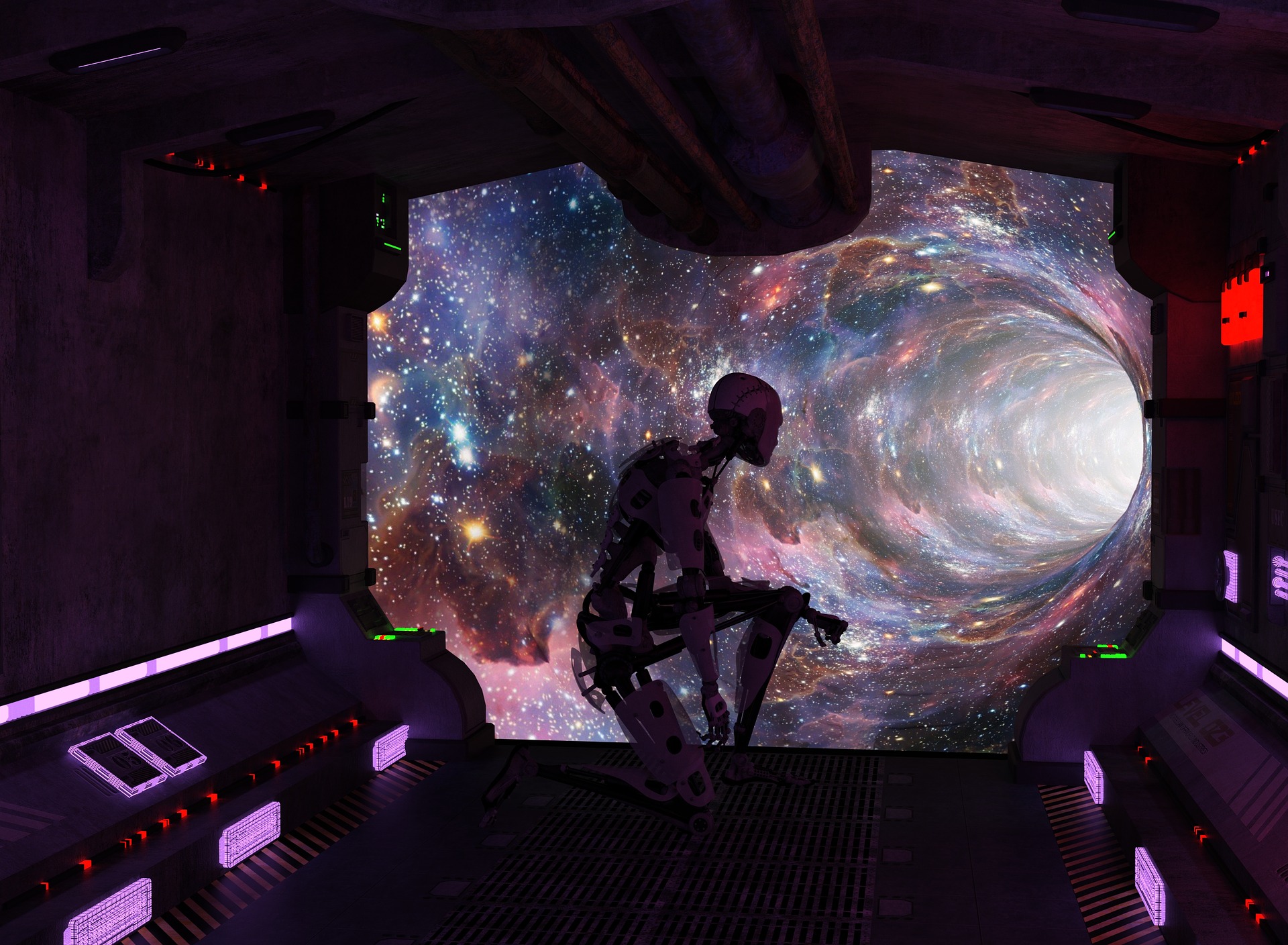
An implanted antenna in your head that enables you to ‘hear’ colors. Or online seismic sensors in your feet that allow you to feel earthquakes. No, this is not science fiction. Cyborgs and artists Neil Harbisson and Moon Ribas have actually had various sensors and electronic devices implanted in their bodies. In fact, this qualifies Harbisson as the first officially recognized cyborg in the world.
Definitions
But what exactly is a cyborg? The definitions appear to vary. Peter Joosten, biohacker, speaker and futurist, says: ” Indeed, there is no single definition. In popular culture a cyborg is really seen as a fusion of man and machine. Consider Robocop or Terminator. But there are those who argue that we have all been cyborgs for a long time already because of our dependence on smartphones and other technologies. Building on that, you could say that someone with a pacemaker or a hearing implant is also a cyborg.”
Joosten envisions a future in which humans will incorporate more and more electronics in their bodies. “Yes, I think this is inevitable. The technology is getting smaller and smaller, and it’s a logical next step that it will eventually be placed inside our bodies.”
Implants
There are probably thousands of people worldwide who have already had something implanted in their bodies, including Joosten himself. “If you are talking about electronics in the body, then I’m definitely a cyborg too,” he laughs. “I have a chip in my hand on which there is some data about myself. A kind of digital business card. I’ve also had a keychain that you can use to pay contactlessly converted into a chip. I hope to be able to go to a piercing studio soon to have it implanted.”
Joosten emphasizes that these are all relatively harmless things: “For example, I wouldn’t be so keen on having something implanted in my brain. I still find that far too nerve-wracking. I have the idea that my identity would be affected. This is why it is also extremely important that we take ethical issues, safety and health into account in all these developments.”
Artists
For the time being, the people who do dare to have this type of procedure performed seem to be artists, like Harbisson and Ribas. Joosten: “It’s true that it’s now being pursued mainly by artists. I think it’s good that they are challenging us to think about it in this way. But it’s even more interesting to see what the major technology companies will do with this. They will have a bigger impact on our cyborg future than artists have.”
David Ernst, Cultural Programmer at Studium Generale at the University of Eindhoven (TU/e), agrees that it is predominately artists who are trailblazers in the cyborg field at the moment: “Many of the operations they are having performed are still illegal, for one thing. The surgeons choose to remain anonymous. But Harbisson rightly points out that sex change operations were also illegal in the early 20th century.”
Cyborg event
Since Ernst was fascinated by Harbisson and Ribas, he decided to invite them to an online event. Both cyborgs will give a lecture during the Dutch Technology Week (DTW), after which Ernst will interview them. This will touch on ethical and philosophical issues, among others. “Anyone can register for the event free of charge. Of course, we hope that viewers will also come up with questions via the chat section.” Speaking about his own fascination, he says: “What I find so special is that they just want to make the world a better place. For instance, they argue that cities would no longer need to be lit up at night if everyone had night vision. And if we all had a temperature regulator in our bodies, the heaters and air conditioners could also be gotten rid of.”
He continues: “Their definition of cyborg is very clear. The implant must have an effect not only on the body, but also on the mind. All of our knowledge is gained from our senses. Cyborgs like Harbisson and Ribas believe that we can gain more knowledge if these senses are significantly improved, or if we acquire more senses. There is something to that, of course.”

